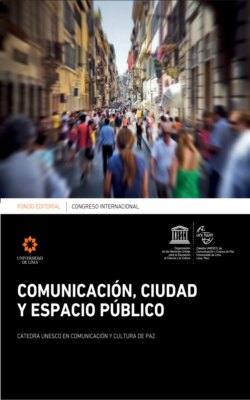Читать книгу Congreso Internacional Comunicación, ciudad y espacio público - Ángeles Margarita Maqueira Yamasaki - Страница 7
PART I ARCHITECTURE, COMMUNICATION, AND THE POETICS OF THE OPEN WORK The Poetics of the Open Work
ОглавлениеIn the 1970s, the capacity of the design expert to perform as a social mediator was contested. Fighting the figure of the design expert became a common trend in the 1970s, especially for a group of architects that Tzonis and Lefaivre called the populist movement. Although very diverse and unstructured in its ideological framework, this movement actively pursued a paradigm shift where the focus shifted from an ideal of ‘order’ and ‘expertise’ to one of ‘freedom’ and ‘pluralism’ (Tzonis & Lefaivre, 1976, p. 28). “While [Welfare State] architects saw the designed environment as a well-ordered regiment”, Tzonis and Lefaivre argued, “populists envisaged it as a well serviced supermarket” (Tzonis, Lefaivre, 1976, p. 29). In this context, the expert’s ability to engage in meaningful communication with the ordinary man on the street became a flagship for a new disciplinary approach in the design disciplines. The envisioned position of the designer-expert brought about a flagrant contradiction, though. While driven by an approach of liberation for the user, the populist movement fell prey to what Barry Schwartz called “the paradox of choice” (Schwartz, 2016). As Schwartz aptly demonstrated, too much choice does not always resonate with an increased autonomy, freedom or self-determination. It often means exactly the opposite. In this context, it is worthwhile to review briefly the relation between standards, norms, and openness in design decision-making.
While the critique to the Welfare State architecture gained momentum in the 1970s, there were earlier attempts to reconfigure the role of the architect in design decision-making. One of the earlier critiques to the standards and norms of Welfare State architecture emerged in the late 1950s and it was supported by the notion of open form and open work1. In the 1960s, open form and open architecture became notable examples of a critique to the mass housing architecture championed by the welfare state2. Throughout the 1960s, open form gained momentum as a strategy to promote meaningful aesthetic communication between the designer and the user, where the earlier neither dictates the needs of the later, nor is subjugated by them.
This attempt to reconceptualise the design agency of architects would gain a strong intellectual support with the publication, in 1962 of Umberto Eco’s Opera Aperta (Open Work)3. Among the essays collected in Open Work, “The poetics of the Open Work” could be singled out as a major contribution to discuss the role of the individual addressee in the reception of the work of art (Eco, The Role of the Reader: Explorations in the Semiotics of Texts, 1984)4. In this essay, Eco highlights the notion of open work as a rejection of definite messages. He emphasizes the initiative of the individual addressee in giving aesthetic validity to a work of art introducing his particular perspective (Eco, The Poetics of the Open Work, 1989, p. 4). However, Eco brings about a subtle yet meaningful variation to the concept of openness, defining a work of art as a closed form and open product. Closed in its uniqueness and wholeness and open in its predisposition to be interpreted in infinite forms while preserving its specificity. He concludes, then, “every reception of a work of art is both an interpretation and a performance of it, because in every reception the work takes on a fresh perspective for itself”. For Eco, the reception of the work of art is an act of freedom and, as such, an imposition of a single sense at the very outset of the receptive process should be prevented. To open up the possibilities for interpretation and performance, Eco champions the ideas of suggestiveness. He goes on contending “an artistic work that suggests is also one that can be performed with the full emotional and imaginative resources of the interpreter” (Eco, The Poetics of the Open Work, 1989, p. 9).
Suggestiveness thus embodies a certain amount of ambiguity and ambivalence, which become important qualities to challenge dogmatic directional centres (Eco, The Poetics of the Open Work, 1989, p.11)5. Ambiguity and ambivalence would become the key characteristics of “works in movement”, a sub-group of open works where the collaboration of the addressee in making the work of art is vital, because they are structurally unplanned or physically incomplete, such as Calder’s mobiles or Mallarme’s Livre. Eco suggests incorporating indeterminacy as part of the poetics of the open work. “As in the Einsteinian universe”, Eco argues, “in the ‘work in movement’ we may well deny that there is a single prescribed point of view” (Eco, The Poetics of the Open Work, 1989, p. 19). Eco’s poetics of the open work is based on an organizing rule that allows numerous different personal interventions, resisting, however, indiscriminate participation (Eco, The Poetics of the Open Work, 1989, p. 19). In this article, I will explore the ambivalent character of Eco’s notion of open work to define the intellectual background for a discussion on the interplay between architectural expertise and citizens’ participation in design decision-making processes. The potential and the shortcomings of the idea of open work will be used to examine the extent to which the designer qua author and the user qua addressee can negotiate sovereignty in the design process, without falling prey to the perils of authoritarianism or populism.
